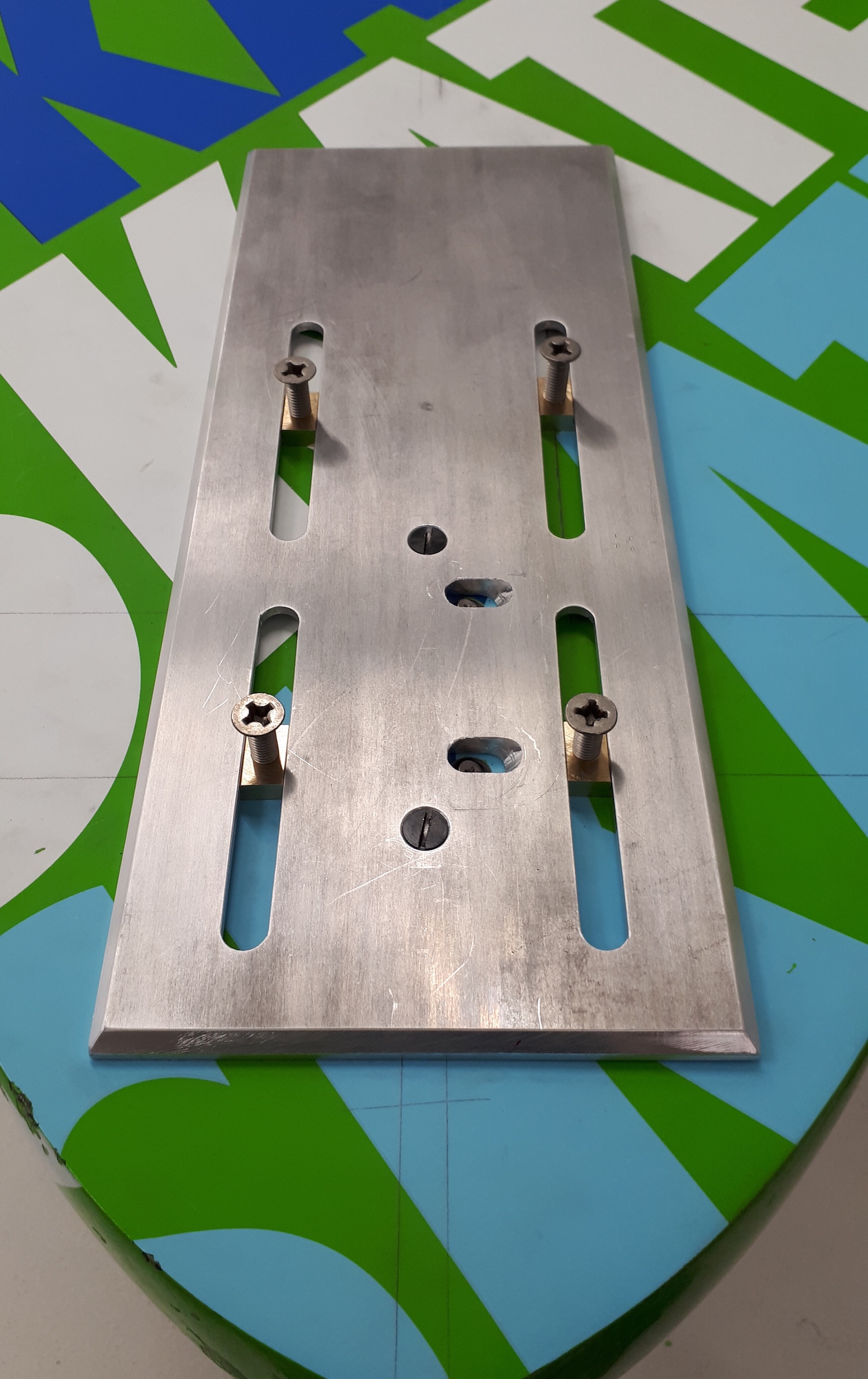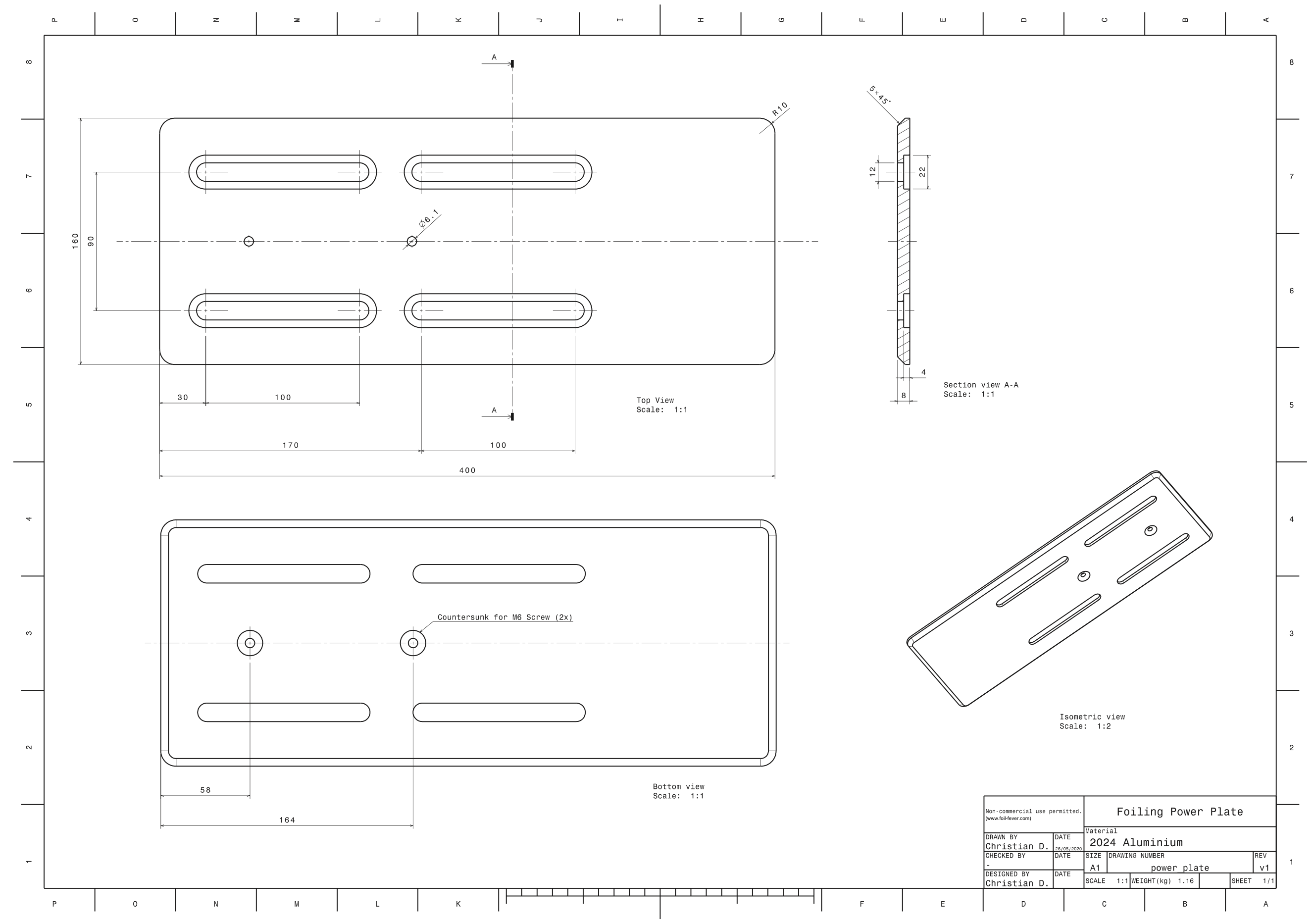When I started hydrofoiling I did not have a proper board that could hold the Deep Tuttle mount of my newly acquired Moses (Kit 85) foil. After several hours of searching for a board on the internet the conclusion was clear: most of the windsurf foilboards were either extremely expensive, huge, had weird shapes or were just not particlularly pretty. At that time most of my boards had an unenforced Powerbox and when I stumbled upon the CHINOOK PowerPlate I knew this was part of the solution to all my problems (the other part was a Deep Tuttle to plate adapter). Unfortunately there was no shop that would sell these adapters in Switzerland and so I had to build my own.
As a base material I choose an 8 mm aluminum plate with 400 x 160 mm2 that got 4 slots for mounting the foil with t-nuts. Instead of the t-nuts also threaded holes with a hole pattern matching the one of the foil or the adapter can be used (usually 165 mm by 90 mm for M6 screw mounting and 125 mm by 90 mm for M8 screw mounting).
The t-nuts were made from brass with an effective thread length of about 6 mm, which has proven to be sufficient to withstand the forces acting on them.
To mount the power plate on the board a fin-head is needed. I separated the power box head of an old fin and closed all openings with tape.
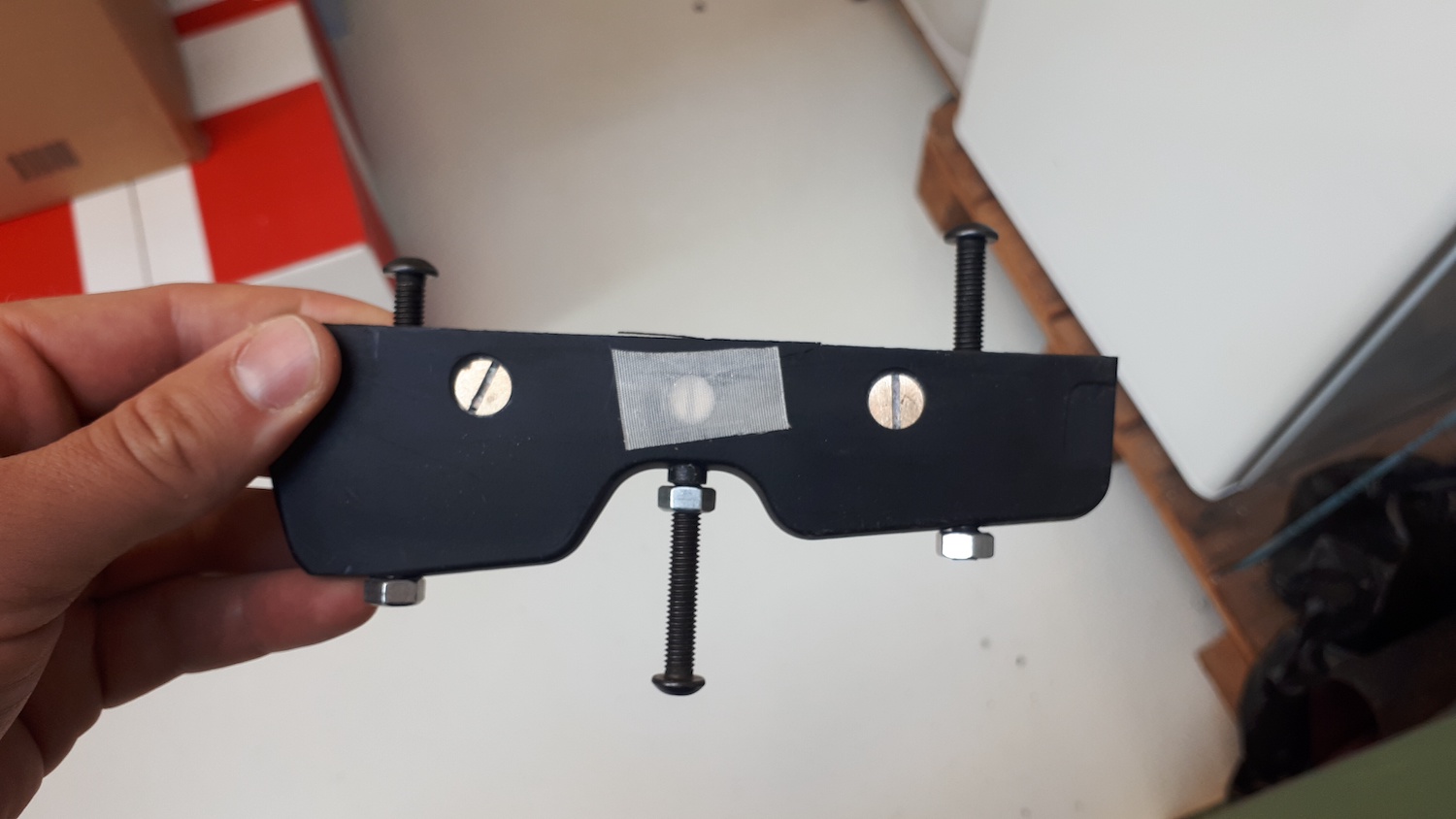
Then, M6 nuts with spacers in between were clamped at the right position to fit the hole pattern of the power plate. The screws were covered in multiple layers of mold release wax to get them out after the next step.

The cavities were filled with a mixture of epoxy and 6 mm carbon chips.

After sanding off excess material the fin head it started looking pretty good.
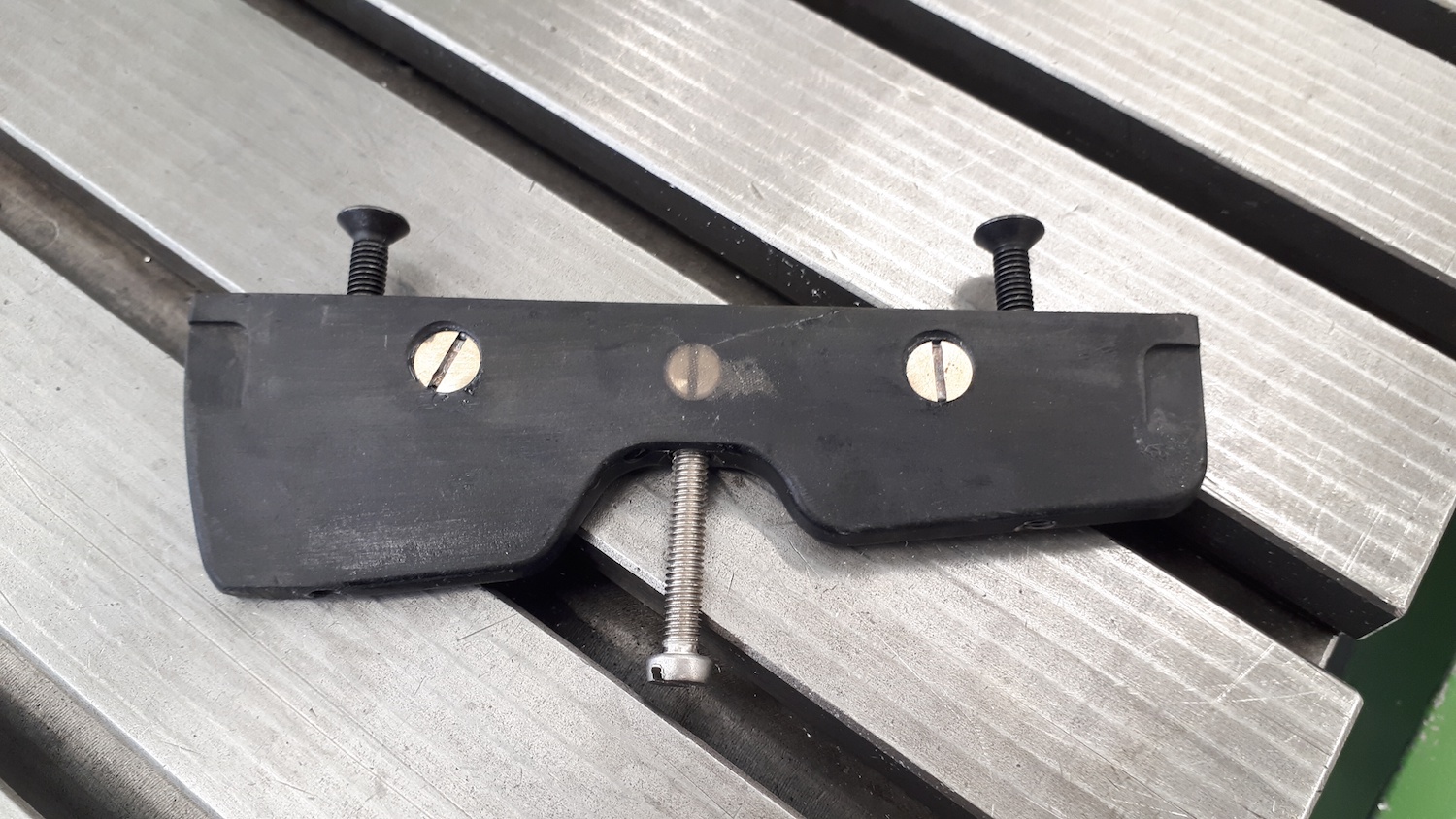
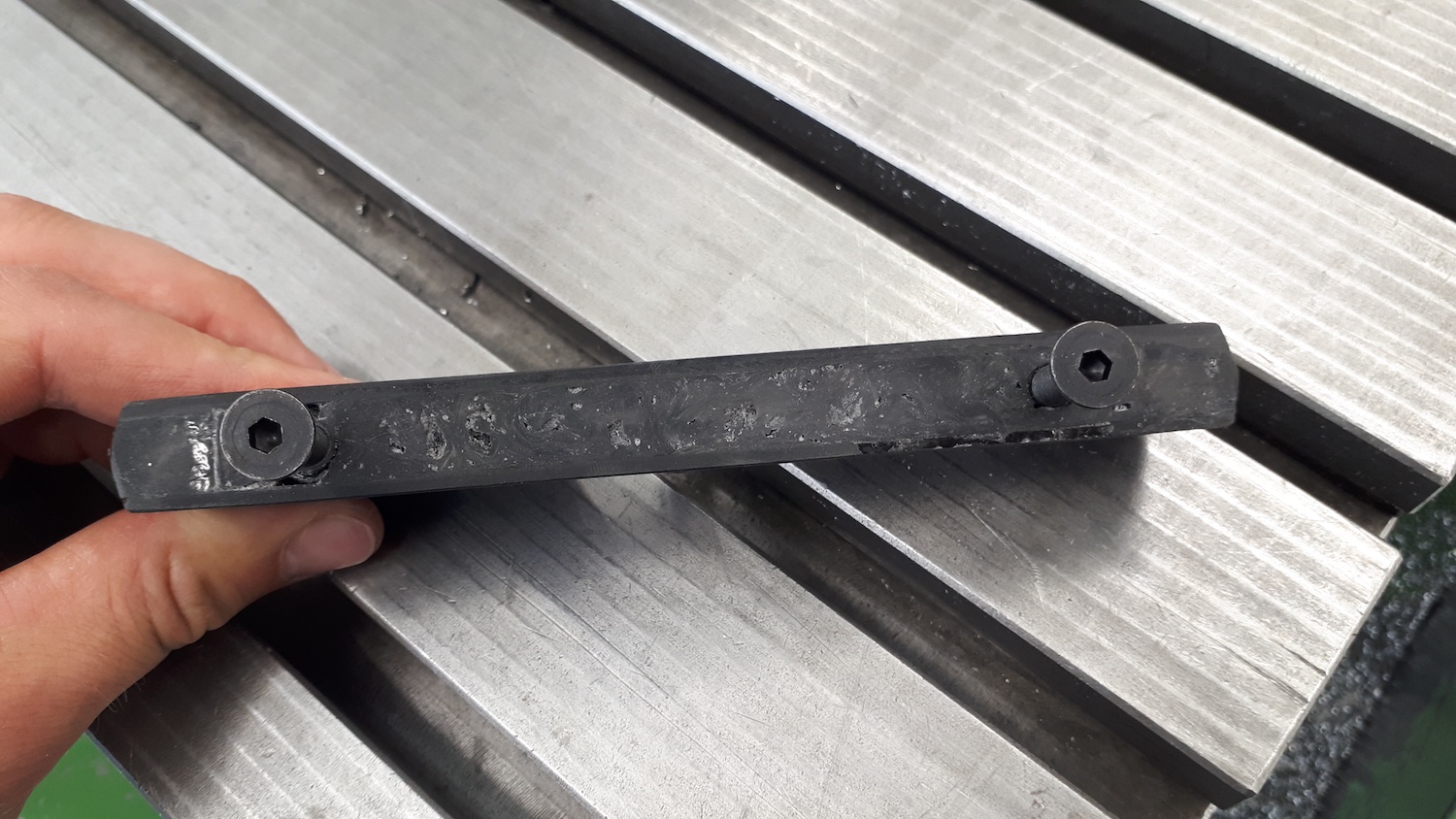
This is the power plate after assembly. What is missing in the picture is foam padding for the board plate interface. The bottom shapes of windsurf boards can vary greatly and the padding should be adjusted individually for each board to avoid pressure marks. Personally, my favorite material to do this is rubber. It is cheap, you can get it in plates of different thickness at almost every do-it-yourself store and it can be glued with contact adhesive.
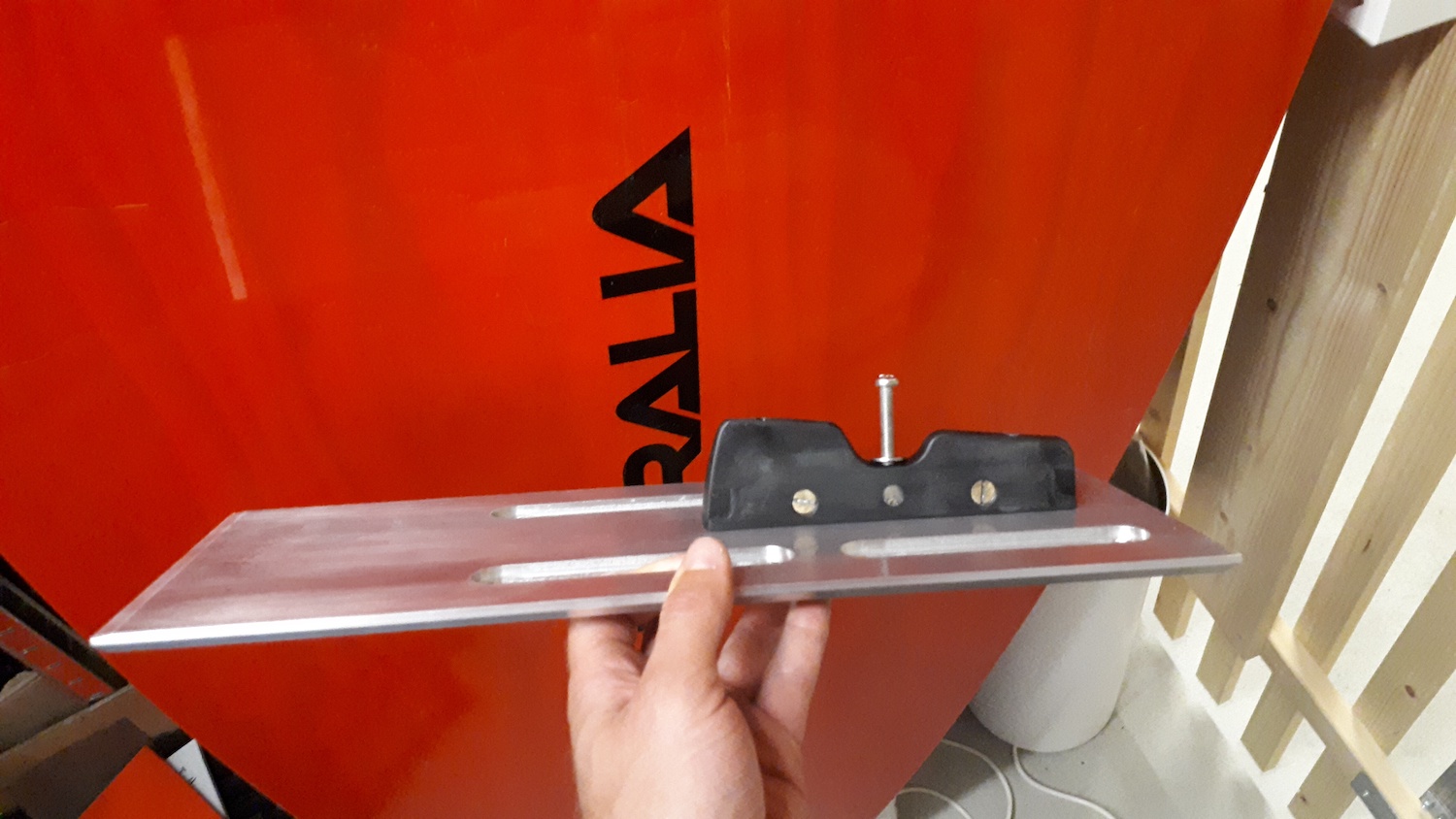
This is a picture of the power plate mounted on my JP Magic Ride 118 board without padding (thus the gaps on the left and right of the center line) and t-nuts.
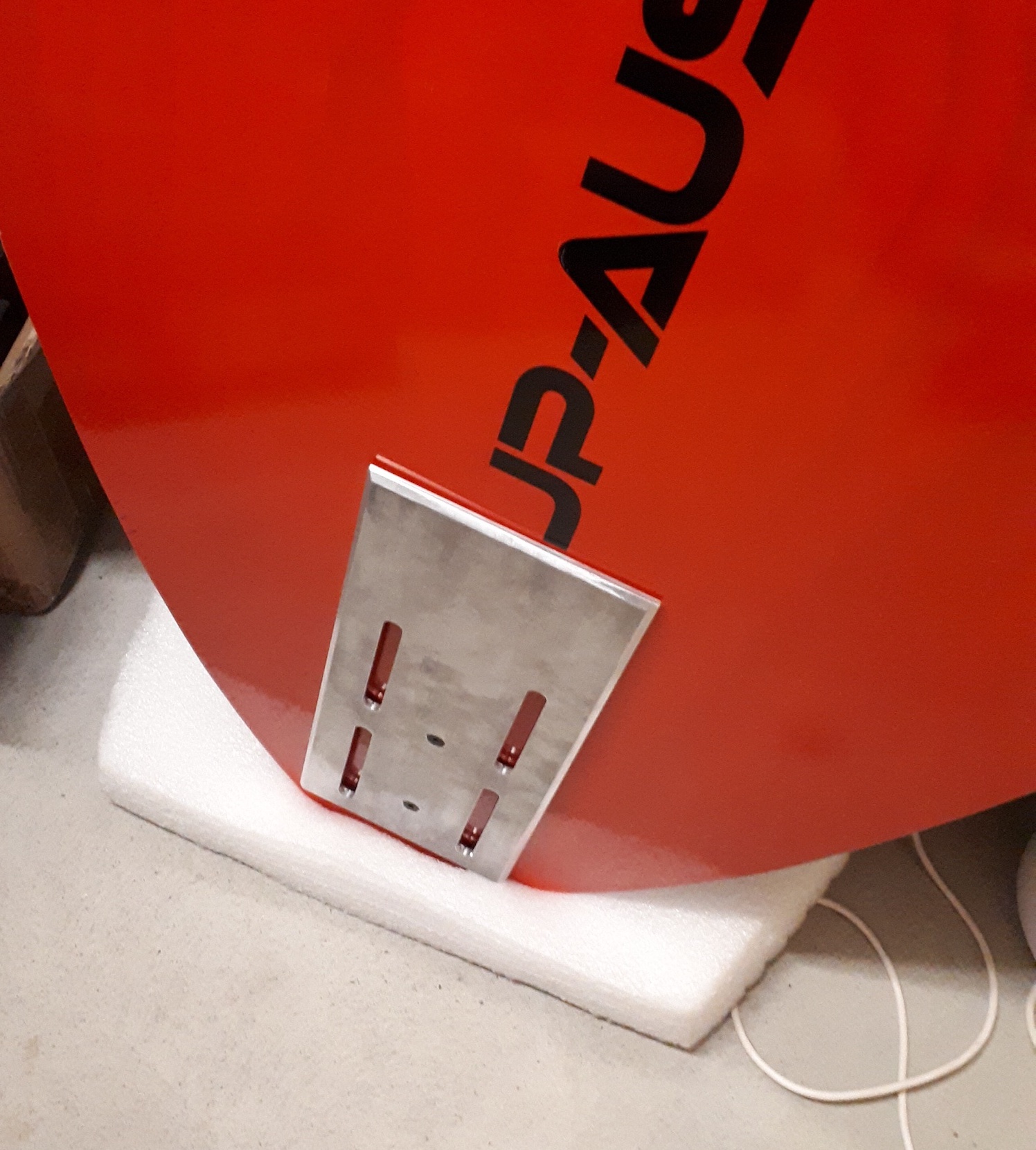
So far to the construction. Together with my Deep Tuttle to Plate Adapter I have used the power plate to learn foiling.

Having the ability to shift the foil mounting position forward and aft was very useful in the beginning. Ultimately the foil was always mounted as far forward as possible because that way the lift was quicker and controlling the flight was more comfortable. Just to be safe the foil was always secured with a rope in case something breaks. There was one occasion in which I almost lost my foil: One day during sailing at Lake Garda the power box head started cracking (red circle in the picture below) and the whole piece got bent.
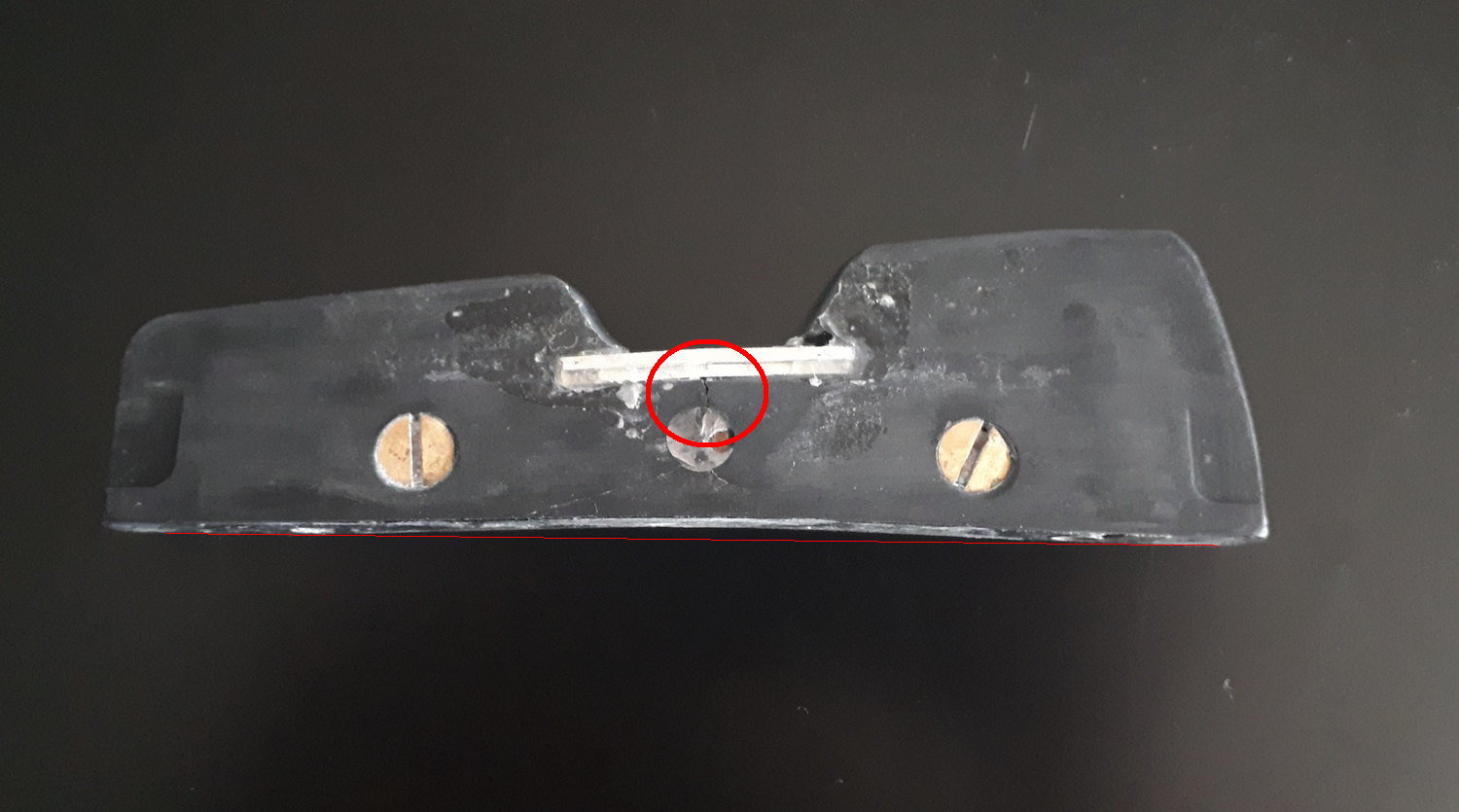
As a quick fix I added two pieces of aluminum, each 2 mm thick, and filled the crack with epoxy which proved to be sufficient in terms of stability. Still, it was a close call and I will add much more reinforcement into my next version (if there is any) or even make the piece out of aluminum.
Assessment
I used the power plate for about 20 hours and learned foiling with it using my existing windsurf boards.
The pros:
- Keep using your existing boards (and fins)
- Comparably cheap
- Foil position can be adjusted
The cons:
- Not 100% safe - the only thing that separates your beloved foil from the seabed is one M6 screw. Thus, I wouldn't do jumps with it, especially if the foil is mounted off-axis of the fin box.
- The power plate might might leave pressure marks on your board if the padding is not done well or your board has a thin surface layer (no different for commercial power plates).
- Adds additional drag and weight.
- One either needs a foil mast with a plate head or an adapter for going from Deep Tuttle to plate mount. If you plan to buy a dedicated foil board with a Deep Tuttle at some point the latter is probably the better option for you.
I did try using it with the slot box of my Fanatic Skate 101l with an aluminum slot box fin head but the strength of this construction seemed too weak in a static test on land and was ultimately never used in the water.
